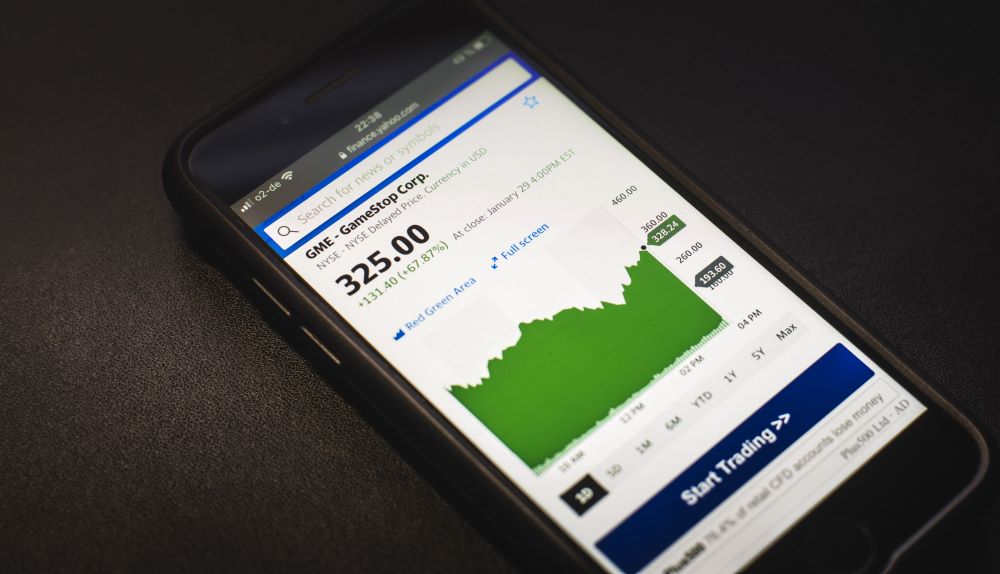Seed Funding for Startups 101: Your Questions Answered
Although most startups are based around an innovative idea or product, the vast majority still fail to get off the ground. What’s the difference between achieving scalable growth and failure? For many startups, it’s finding adequate funding, a journey that often begins with seed funding.
Here, we explore popular questions about seed funding for startups. You can use this table of contents to navigate to specific parts of this guide.
Table of Contents
- What Is Seed Funding
- Why Do Startups Need Seed Funding?
- Types of Seed Funding for Startups
- How to Get Seed Funding for Your Startup
- How Much Seed Funding Should You Ask For?
- When Should You Raise Seed Funding?
- How to Make a Pitch Deck
- How to Create Your Investor List
- 5 Steps to Choose the Right Investors
- The Importance of Equity Management During Seed Funding for Startups
- Key Takeaways
What Is Seed Funding
In its most basic form, seed funding is money — from any source — that helps get a startup off the ground and into the phase of the business when ideas become a reality. With seed funding, businesses can prove that their concept works, launch a specific product or idea, or even pursue a new market.
Seed funding is not a loan. To receive funds, business owners usually give investors an ownership share and/or a share of the profits in the company in exchange for capital investment.
Why Do Startups Need Seed Funding?
Every entrepreneur starts with a great idea, but turning that great idea into a profitable business isn’t easy. Seed funding gives founders the funds they need to nourish their idea so the business can grow and succeed. It helps a startup scale, reaching the point where it can attract venture capital and where an investor can generate a strong return.
Types of Seed Funding for Startups
Here are some of the most common sources of seed funding for startups.
- In recent years, many startups have turned to crowdfunding platforms. Kickstarter, Wefunder, FundRazr, Indiegogo — whatever your business, there’s a platform that can help you raise the funds you need to get to the next level. But as with any business venture, it’s essential to pay attention to the details. Some platforms have specific timeframes for raising funds. Many — like Kickstarter — are “all or nothing” platforms: funds are collected only after meeting your project’s fundraising goal. In addition to payment processing fees for each transaction, most platforms also charge fees based on a percentage of the amount raised.
- Often aimed at early-stage startups, incubators focus on nurturing innovation and idea generation. They typically offer smaller investments as well as workspace support, networking and mentorship opportunities, and demo days or pitch events.
- Accelerators like Y Combinator or Techstars focus on helping startups grow. They offer selected companies a set funding amount in exchange for a set percentage of equity. Many also deliver indirect access to funding through mentorship opportunities or by hosting networking events, demo days or pitch events. Some accelerators also offer workspace support, including access to technology and services that can drive growth.
- Angel investors are high net worth individuals who invest seed funding for startups in exchange for equity in a company. Many angel investors use convertible debt, which allows the funds loaned to be converted into equity. The advantage of convertible debt is that the company’s valuation is deferred until the next round of financing. At that point, the debt is converted into equity, and the angel investor receives an “early investor” discount.
- Angel investors may also join together in angel groups. This lets them invest more significant sums, benefit from larger ownership shares, and receive larger potential returns. Angel groups often include investors from a range of industries and markets and will often decide as a group whether to invest, how much they should invest, and under what terms.
- Like angel groups, angel syndicates are made up of a large number of smaller investors who choose on a case-by-case basis whether to invest in an opportunity. By pitching their business to a group’s lead investor, who then presents the investment opportunity to the broader pool of investors, startups can reach a much larger investment pool.
- Corporate seed funding from tech giants such as Apple or Google may be an option depending on your industry. Many large corporations look at startups as a source of new talent and new ideas.
- Many founders use their personal savings when getting their startups running, a process also known as bootstrapping. The advantages of this approach are that personal savings don’t need to be repaid, and they don’t come with any equity obligations. On the downside, bootstrapping can also lead to additional financial pressure for founders.
- Debt funding typically refers to loans from banks, other commercial lending institutions, or family and friends.
- Finally, venture capital funds may provide seed funding for startups that have exceptional potential for growth. Investors in venture capital funds are generally vetted, and their contributions to startups can include professional expertise and money. Venture capital investment nearly always involves exchanging ownership shares for support.
There are several necessary steps for most entrepreneurs between looking for seed funding and putting those funds to work. Here’s some more information about what that path can look like and some of the questions you’ll need to ask along the way.
How to Get Seed Funding for Your Startup
Regardless of your approach, the first step to get seed funding for startups should be raising the profile of your business. Networking, attending conferences, being active on social media: all of these raise the chances that you’ll attract the attention of investors.
Next, be prepared to speak about your business. At this stage, you should have a solid business plan, including realistic projections for costs, revenues, and growth. A thorough SWOT (Strengths, Weaknesses, Opportunities, Threats) analysis for your business will show that you understand where your business fits in the larger market. Have you worked with mentors or received advice or guidance from industry insiders? Make sure you can refer investors to support who can speak knowledgeably about your idea or product.
You’ll also need to understand how potential investors make their investment decisions.
How much funding does your startup need? How will the funding be used? How much of the business are you willing to give up? Know the answers to these questions before you approach investors.
Finally, be ready to think creatively about finding seed funding for your startup. Are there opportunities for investors to take an active role in your business, providing expertise or helping with operations? For some startups, this type of practical investment can be more valuable than a cash investment.
To get the best results when looking for seed funding, entrepreneurs need to find the right investor. What should you look for? Ideally, your investor should have some knowledge of the sector. You should also be able to work with your investor, so don’t discount the importance of personality and temperament.
How Much Seed Funding Should You Ask For?
Don’t be tempted to ask for too much seed funding — but how much is too much?
One good place to start is to calculate your current monthly costs, then think about how many months it will take to get your business up and running. How will your business evolve during that time, and what impact will that have on your costs? Once you’ve arrived at a figure, add a percentage on top to account for unforeseen circumstances.
Ultimately, however, the amount you raise will depend on what your business is worth. When raising seed funding for startups that are just getting off the ground, it will depend more on the growth potential and less on how much the company’s assets or intellectual property are worth. You’ll also need to factor in how much progress your company will make with different-sized investments and how much of the company you’ll need to give up to get that amount of seed funding.
When Should You Raise Seed Funding?
It’s essential to raise seed funding at the right time. Your business needs to have reached a certain level of maturity before you start actively approaching investors. Here’s what that looks like:
- You’ll need to have a minimum viable product (MVP).
- You should demonstrate that your product or idea works and that there’s a market for it.
- You should be able to prove to investors that there’s interest in your product. Ideally, this will mean revenues, but it could also mean concrete evidence of consumer interest, such as user registrations or signups.
- Your business should have key personnel in place.
How to Make a Pitch Deck
A pitch deck is an essential tool when raising seed funding for startups. It attracts investor interest and converts that initial interest into action that culminates in an offer to deliver funding. Your pitch deck should tell potential investors about your business — where it stands right now and how you expect it to grow. It should clearly explain the problem your business addresses and how it delivers a solution.
Craft a compelling story about your business. Why did you start this business? Why now? What do you bring to the table that sets your business apart? This is your opportunity to show investors that you’re passionate about your business and driven to see it succeed.
Your pitch deck should resonate with potential investors. To do this, you need to know what they’re looking for. Above all, keep investors interested and engaged. Include your insights about the market you’ll be entering and demonstrate that you have a deep understanding of the steps your business will take as it grows.
Make your pitch deck compelling, but don’t try to pack too much information into it! Aim for 10 to 12 slides, and don’t use more than 15. Stick to one key idea per slide, use lots of pictures and charts, and keep the text to a minimum.
Consider preparing two separate versions of the pitch deck. The first should support an in-person presentation, during which you’ll present the ideas in the deck without reading from the slides. The second should be a presentation that you can send as an attachment to an email. Make it easy for investors to open your deck by using .pdf files. You can even embed videos in a .pdf for a video presentation.
Whether you’re presenting in person or through a video, include a short demonstration to show potential investors exactly how your product works.
You’ll also want to spend some time putting together a detailed financial projection. Don’t just focus on the short term — the time when you’d use the seed funding — instead, explain how the seed funding will set your company up for future growth.
This is your chance to show where you expect the company to be in one year, five years, or ten years. What does it look like to see that growth? Do you anticipate expanding into different markets? Will an expanded product line drive growth? Will there be lateral growth in different industries? These are all crucial questions to consider and demonstrate in a pitch deck when raising seed funding for startups.
Your pitch should conclude with a specific request that details how much seed funding you’re looking for and how much equity you’re willing to give up. If you’re pitching to an investor who can offer expertise, be explicit about what skills you’re looking for and what you’ll offer in exchange.
Once you can demonstrate that your business is viable, your financial projections are complete, and you’ve crafted your pitch deck, it’s time to approach investors. Here’s what you need to know about finding the right investors.
How to Create Your Investor List
There’s no getting around it — creating your investor list requires information. But where should you look for that information? Start by using your existing business relationships with other entrepreneurs and business founders, who can often put you in contact with potential investors. This is an essential step when seeking seed funding for startups.
Startup accelerators or incubators are excellent sources of information about potential investors, especially since these programs often include access to mentors and networking events. And don’t forget about prospecting platforms such as Crunchbase or online lists of Angel Investors and Venture Capital Investors.
What other considerations are essential when building a list of investors to target? The investors on your list should have a track record of investing in startups in your industry and your location. You’ll need to ensure that they have access to the funds you need and that their timelines match your expectations for growth. It’s also essential to look beyond money: what can an investor offer in terms of expertise, advice, or guidance as your startup grows and develops?
Finally, it’s wise to research how their past investments have played out. How did the startups perform? Did the investors participate in subsequent rounds of funding? Did investors exit successfully? If there were challenges, how did the investor-startup relationship end?
5 Steps to Choose the Right Investors
Here are five essential steps to take when choosing seed funding investors for your business.
- Decide what type of investor you want. Do you want an investor who plays an active role, or would you like them to stay in the background?
- Do some research about potential investors. Look at their net worth and past investments. Have the businesses they’ve invested in been successful? What is a typical timeframe for their investments? Do you specialize in one or more industries?
- Set a funding goal and incorporate that funding into your business plan.
- Look beyond funding and think about what expertise or advice would be most helpful for your business.
- Think carefully about each potential investor. Are they a good fit for your business?
The Importance of Equity Management During Seed Funding for Startups
Since most startups will need to give up equity to obtain seed funding, managing equity is an integral part of the process. For most businesses, managing equity means creating a capitalization table or cap table.
Because your cap table includes all of your company’s equity ownership capital, it’s an essential tool in calculating your company’s overall market value. Your cap table should also include the total funding amounts received at each stage in your company’s growth, as well individual investment amounts, ownership shares, and share prices.
Why is this important when you’re looking for seed funding? Having a solid understanding of your company’s equity shows investors that you also understand how your business will grow and how their investments will contribute to that growth.
What are some other equity management considerations? You’ll want to show potential investors that your business has a defined exit strategy to ensure they receive a profit. Two options to consider are an Initial Public Offering (IPO), where a portion of the business is sold to the public in the form of shares, or a merger acquisition, where the company is sold.
Key Takeaways
It’s no secret that acquiring seed funding isn’t easy. Want to give your startup the best chance to grow? Ultimately, it comes down to understanding, and hopefully, this guide on seed funding for startups has helped.
In addition to understanding your business and how seed funding can help it grow, you also need to understand the different types of investors, what they can bring to your business, and how they make their investment decisions. Do that, and you’ll be well on the way to getting the seed funding that can set your business on the road to success.
Are you looking for an equity management platform that can help get your startup up and running quickly? Sign up for a free trial of Diligent Equity today.



